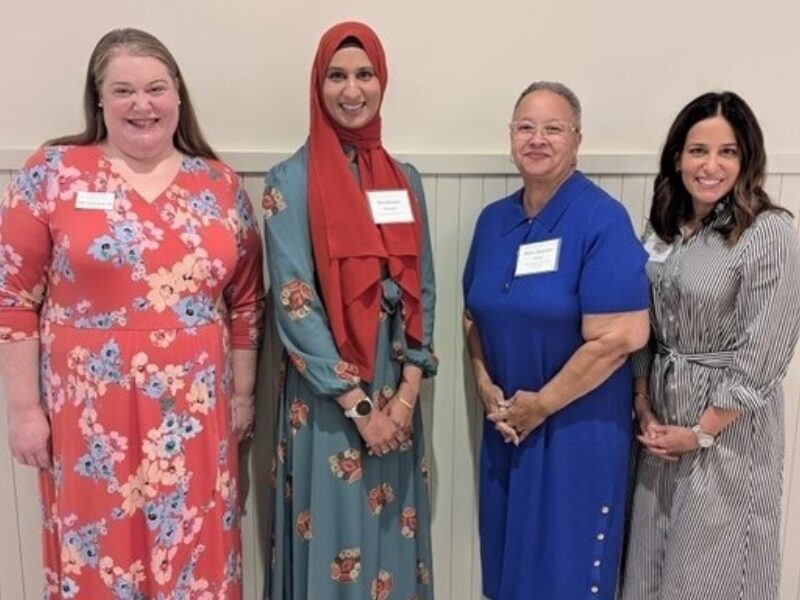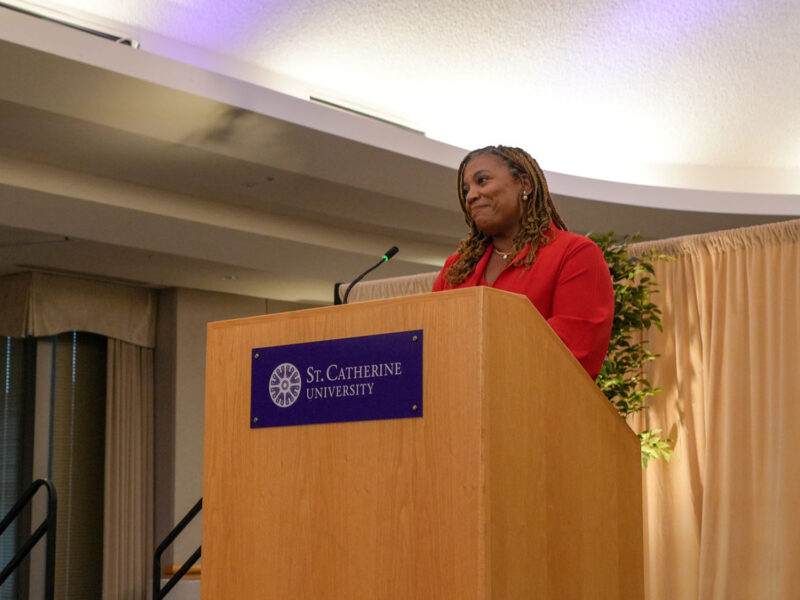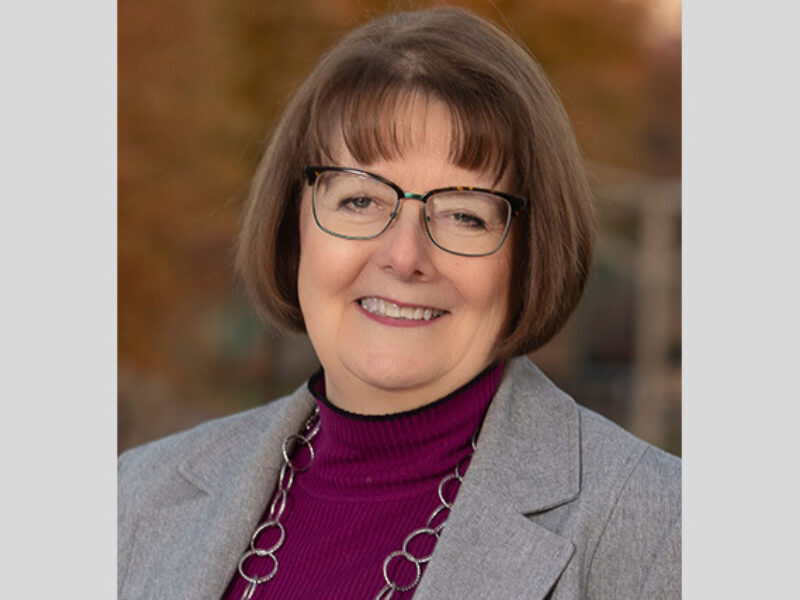We break down the three most common ways donors are giving retirement assets to the causes they care about.
By Mariah Brook, Director of Gift Planning
For the past several decades, Americans have been very good at putting money away for retirement.
According to a recent report from the Investment Company Institute, America’s retirement assets totaled $33.7 trillion as of June 30, 2022. Additionally, retirement assets accounted for 31% of total household wealth.
Over the past several years, many people have realized that they have more assets than they may need in retirement and have chosen to use some of that wealth to support their favorite charitable causes.
Below are three of the most common ways donors can use their retirement assets to support charitable causes.
1. Qualified Charitable Distributions (QCD)
This method of giving is the fastest growing area of charitable giving.
What is a QCD, and why has it become so popular?
A Qualified Charitable Distribution is a tax-free distribution from an Individual Retirement Account (IRA) to a charity.
Before the creation of the QCD, distributions from IRAs to charity would have been virtually 100% taxable to the donor, so very few people were using their IRAs to support causes they cared about during their lifetimes.
The following are important requirements:
- The donor must be at least 70.5 years of age at the time of the distribution.
- Tax-free distributions to nonprofits are limited to $100,000 per year/per IRA owner.
- The distribution can count toward the IRA owner’s Required Minimum Distribution (RMD).
There were some tweaks to IRA distribution rules in 2020 that pushed the required beginning date for retirement distributions for many people to age 72, but a QCD at age 70.5 is still worth considering.
Year-end is a time when many donors contemplate the charitable gifts they will make, and a Qualified Charitable Distribution may be a good fit for donors looking to maximize their charitable giving.
2. Beneficiary Designations

Naming a nonprofit organization as a beneficiary of retirement accounts became popular in the 1990s. As donors realized that they would likely not use all their retirement assets during their lifetimes, they decided to direct some, or all, of the excess to their favorite charities after they passed away.
If left to family or friends, retirement assets are almost always 100% taxable to them at their highest income tax rate. Retirement assets typically pass to nonprofits tax-free at death, and the donor may qualify for an estate tax charitable deduction.
These gifts also pass to the beneficiaries outside of other estate planning documents, such as a will or living trust. Therefore, nonprofits need only file a claim form at the time of the donor’s death to receive the gift. They won’t have to wait for estate administration to be completed, which can sometimes be a lengthy process.
A beneficiary designation is an easy gift to make. It’s also revokable, so the donor can add or remove charitable beneficiaries at any time. To name a nonprofit as the beneficiary of an IRA, 401(k) or other retirement account, simply complete and submit a beneficiary designation form provided by the company that administers the account.
You’ll likely need the following information, which is often listed on the nonprofit’s website: Organization's legal name, Federal Tax Identification Number, and the organization's physical address.
For example, here is the beneficiary designation language for the Saint Paul & Minnesota Foundation:
Saint Paul & Minnesota Foundation, a Minnesota nonprofit corporation, to be allocated to the [INSERT NAME OF FUND].
370 Wabasha Street North, Suite 300
Saint Paul MN, 55102
Tax ID #: 41-6031510
If this information is hard to find, consider giving the organization a call or consulting easy-to-use online resources, such as CharityNavigator.org or Candid.org.
It is a very good practice to periodically review beneficiaries of retirement and other financial accounts to make sure they align with your current wishes. Before making changes, it is also a good idea to consult with your financial, tax and/or legal advisors to make sure you understand exactly how changes will affect the plans you have in place.
3. Gift of Retirement Assets to a Charitable Remainder Trust
This is a more complex type of charitable gift, but it’s getting additional attention these days and many people are incorporating it into their plans.
A Charitable Remainder Trust (CRT) is a special type of tax-exempt charitable trust that provides income to individuals for a period of time and then the remaining value is distributed to charity.
Why would someone want to establish this kind of trust?
The reasons for a CRT are relatively simple. Usually, the creator of the trust (the donor) would like to create a stream of income for themselves and/or other people. They also like the idea that whatever is not distributed to those individuals will ultimately be used to support charity. They feel good knowing they’ve provided income to family or friends as well as created a significant charitable gift for the future.
One additional attractive feature is that these trusts are typically exempt from taxation and the assets contributed to the trust may entitle the donor to a charitable income or estate tax deduction.
A CRT can be established during life or after death. One popular method for funding a CRT at death is to name the trust as the beneficiary of a retirement account.
If the retirement account is left directly to family or friends, they could access the entire account at once. If left to the CRT, the income beneficiaries receive a pre-determined distribution from the trust every year and are not able to access more. This helps to protect the remainder that will eventually go to the donor’s selected nonprofit. It also allows the donor to exercise a bit of control over how much is distributed to their beneficiaries.
These trusts are versatile and can provide some significant benefits, which is why they’ve made our “top three” list. They are also complex planning tools and should only be created after consulting with qualified legal and tax advisors.
Get Started
To get a charitable gift plan started, either for yourself or your clients, contact one of our experienced Gift Planners today. We are here to work with donors and their advisors to craft the very best charitable gift plans possible.
The Saint Paul & Minnesota Foundation does not provide tax, legal or accounting advice. Please consult your own tax, legal and accounting advisors regarding your individual situation before engaging in any transaction.
This article was originally published in 2020 and updated on Sept. 29, 2022.
As Director of Gift Planning at the Saint Paul & Minnesota Foundation, Mariah Brook helps individuals and families initiate and express their philanthropic plan to maximize their giving. In her role, Mariah also provides nonprofits the support to start and grow their endowments and works alongside professional advisors to help them achieve their client’s philanthropic goals.
Mariah joined the Foundation in 2014 after graduating from the University of Minnesota with a bachelor’s degree in communication studies. A Midwesterner at heart, she loves exploring the people, places and things that make Minnesota home.









